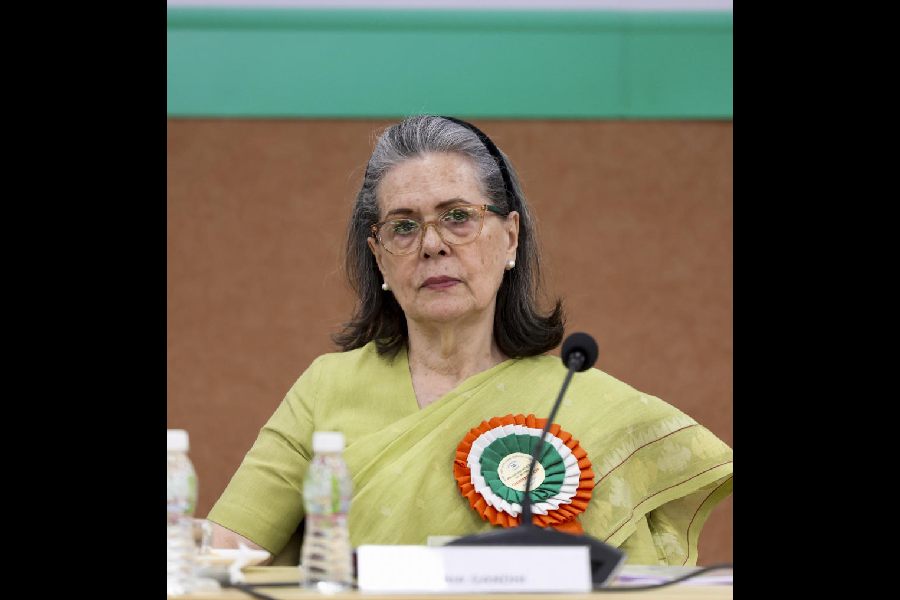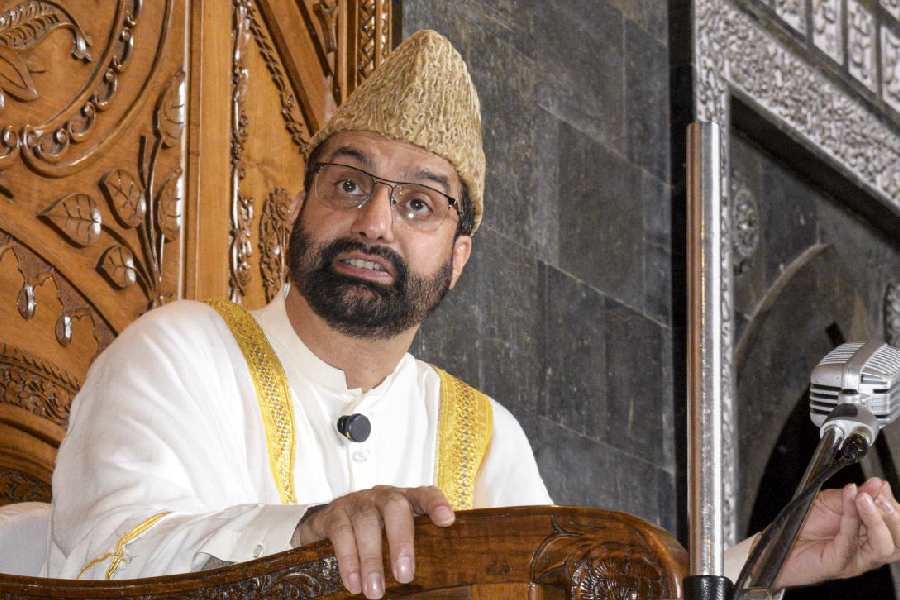 |
| Picture by Pabitra Das |
He came in closer to Saanjh and kissed her on the lips, while feeling her up with his hands. Saanjh moaned and raised her hands, hinting Samar to take off her top. Samar slowly undressed her and picked her up. He lay her on the floor and unzipped himself. Passionately they made love, amidst groans and moans, with the music outside ensuring a blanket cover.”
IIT Delhi student Samar lives on booze, dope and women. Sex comes naturally to him and his ideas about love are summed up by the title of Anirban Mukherjee’s debut novel: Love, A Rather Bad Idea…All It Gives Is A Lousy Hangover (Srishti Publications, Rs 99) — till he falls for Jiya, after trying unsuccessfully to bed her.
This is not another imitation Mills and Boon. In fact, this has been written by an IIT guy himself.
Call it the Chetan Bhagat effect. Lots of young Indians who speak English are turning to fiction, not only as readers, but writers. Of novels that cost around Rs 100. And finding many readers. Some of these are bestsellers (see box).
Storytelling in Indian English, of course, became rampant after the advent of Salman Rushdie, Vikram Seth, Amitav Ghosh and Arundhati Roy. But then the model was literary. Or the stories were written by Shobhaa De. The big writers remain, most of them practising their craft. But the Indian English novel has been liberated from the clutch of the only serious and is also being written by a crowd of ex-IITians, or MBA students, who just feel their story will catch on with other young Indians who speak English. Love is thriving on the campus, with sex, coming of age, curriculum, betrayal, heartbreak, friendship, and the “system”.
Bhagat with his book Five Point Someone, based on his IIT experience, started it all. As a consequence, love has got mixed up with making it to the IIT or another respectable campus. Durjoy Datta and Maanvi Ahuja’s Of Course I Love You..! Till I Find Someone Better revolves around Deb, a student of Delhi College of Engineering — neither particularly good looking nor rich, but he can get any babe. In between nights out, hanging around and boozing with friends — his best friend is a girl for whom he secretly lusts — he crams for exams and worries about grades. And then he falls in love. Trouble, misunderstandings, heartbreak and job follow, topped up by the coming of age.
It is young middle class aspiration writing itself.
Many of the books have painfully long titles. Many of the authors are painfully young. Mukherjee of Love, A Rather Bad Idea... is a 29-year-old ex-IITian. He says he had to present a “different” view of IIT.
“Most of the books about IIT today talk about how the system bogs you down. As a student of IIT I had some great experiences,” he says. “If you put 400 sharp minds together they are bound to explode. The system actually does quite a good job. And the students at IIT do have fun.”
Mukherjee followed his IIT days in Delhi with an MBA from IIM, Calcutta. He now lives in Gurgaon and works in a multinational company. “I once attended a talk by Jeffery Archer. He told aspiring writers to start collecting experiences. I had got the idea for my story while I was at IIM. Then I got busy with work. Some years later, when I saw a Srishti book, I completed the novel,” he says.
Durjoy Datta and Maanvi Ahuja’s Of Course... is set in the Delhi College of Engineering (Srishti, Rs 100), Arpit Dugar’s Nothing For You My Dear Still I Love You…! (Srishti, Rs 100) unfolds at the Dehradun Institute of Technology and Ankur Dahiya’s ‘20 and Still A Virgin? (General Book Depot) is also a campus romance.
Durjoy Datta was 22 when he came up with Of course…, Ankur Dahiya was 19 when he wrote 20 and Still A Virgin? in 2009 and is currently a student of MBA. Ravinder Singh, who wrote I Too Had A Love Story (Srishti, Rs 99), is 24 and Tushar Raheja, who wrote Anything For You Ma’am…An IITian’s Love Story (Srishti, Rs 99), is also in his 20s.
“They are mostly read by the 16 to 30 age group, and some older women. They are mainly campus-based romances and the language is fun and breezy,” says Sidharth Pansari of Crossword.
Bhagat continues to be the face of the group. “He brought us out and even today if anyone speaks against this genre, it is targeted at Chetan Bhagat and he comes up and defends it,” says Durjoy Datta, an MBA student from Delhi.
Another significant departure from the earlier wave of Indian fiction: the stranglehold of Calcutta over the written word is over. The new fiction is being produced everywhere. And readers in Calcutta don’t mind at all.
Anirban Mukherjee was born and brought up in Patna. Ravinder Singh is based in Chandigarh. Ankur Dahiya is from Rohtak.
“In a small town if a guy approaches a girl and asks her to be his friend, he would be instantly rebuffed. Friendship between the sexes is not approved. But the more you try to stop the youth from doing something, the more they are drawn towards it. My book has a message for society, to change their mindset,” says Dahiya.
But it really doesn’t matter which place the author belongs to: all the books aspire to an India of MBA dreams.
Some new writers are looking beyond the campus, though the idiom remains the trademark Hindi-mixed colloquial Indian English. Advaita Kala’s Almost Single and Anuja Chauhan’s Zoya Factor can be called chick-lit. Dipanwita Mukherjee, in That Calcutta... Those Bongs, tries her hand at the Jhumpa Lahiri genre of short stories that present a slice of Bengali life. Devdutt Pattanaik, introduced as “a medical doctor by training, a marketing consultant by profession and a mythologist by passion,” is making a place for himself with his The Pregnant King, published by Penguin.
Naboneel Chakraborty, 24, has tried to stretch the campus romance with A Thing Beyond Forever. It starts as a school romance but continues into rebirth. “I want to tell stories,” says the BBA graduate, who gave up plans to pursue an MBA to take up film scriptwriting. “I am writing a script for Aniruddha Roy Choudhury, the maker of Anuranan and Antaheen. I would like to direct a film some day,” he says.
Not that his breed is being taken seriously. “These unfortunate gentlemen live a restricted life. They haven’t been exposed. From IIT they move to their jobs in some multinational company. What do they know of the real world? So their subjects are limited,” says Bertram Da Silva, of St Xavier’s College, with a laugh.
“But the other question, apart from their subject matter, is do they know what it is to write a novel, do they know how to write, do they have the skill? It takes a good writer 20 years to master that,” he adds.
“It’s a subject I don’t know a lot about... but I am assuming that maybe the authors are trying to cater to the young readers and these are things that will interest them. Sixty per cent of India’s population is below 35 years and so the authors may be trying to reach out to them,” says Ananda Lal, who teaches English at Jadavpur University.
For the new authors it’s an unabashed, clean break from literature. Says Mukherjee: “The past was about literary books that were written in the Stephanian genre. Most of the writers were from that college and wrote serious literature and were read by serious readers.” It’s over now. “There is a demand for light reads, which has given an opportunity for the students of IITs and IIMs to tell their story. Their language is not literary. You don’t read these books for the language, but for the story and for the author it is a mode of communication.”
“I won’t spare you this time....,” says Lisha, “with full-on nakhre” in Nothing For You My Dear. So groan and moan as you feel it up. The campus novel, we mean.
Poulomi Banerjee
Do you think the age of an author matters? Tell ttmetro@abpmail.com
All about the money, honey
The spurt of new authors has given rise to more publishing houses. Rupa, with Chetan Bhagat in its stable, may not feel the need for more writers writing in the same genre, but Srishti and General Book Depot of Delhi and Expressions headquartered in Pune are catering to these budding storytellers.
“We produce about two books every month and some of the authors are coming up with their second books. Our authors are from across the country — metros as well as small towns,” says Kaushik Bose, the publishing manager of Srishti.
General Book Depot, a 25-year-old publishing house which used to specialise in foreign language reprints, entered the fiction market with Ankur Dahiya. “I loved the script the minute I heard it. Of course the language was not too good and we had to do some editing, but even established authors need that. The book was published in August and we have sold four editions till date. The first print had 2,000 copies. We have since received scripts from other young authors and are considering publishing two-three of them,” says Kaushal Goyal of General Book Depot. “The price (from just below Rs 100 to a little above) and the simple language help. Arundhuti Roy often makes you run for a dictionary. Not everyone wants to read such heavy stuff.”
“Our fiction sale per annum is around Rs 5 crore. Many of the writers are single-book authors and sell an average of 25 copies per month,” says Gautam Jatia of Starmark.
The English fiction market in the city is growing. Sidharth Pansari of Crossword estimates the market to be worth about Rs 50 crore. The highest demand in the fiction segment is for lighter reads. “It constitutes about 20-25 per cent of the fiction sales now, but is growing rapidly,” says Pansari.“Our annual sale for fiction is roughly Rs 4-5 crore with an annual growth rate of 13-15 per cent,” said Mou Sen Mukherjee, the head of PR and marketing at Oxford Bookstore.










